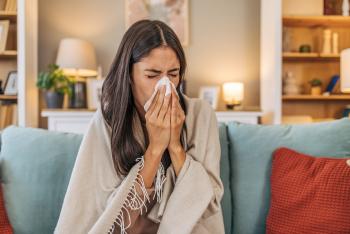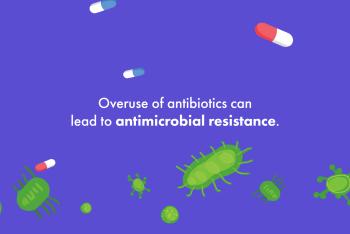Walking pneumonia is a mild but disruptive form of pneumonia with symptoms like a lingering cough...
Read MoreRed Status: Due to the positivity rates of respiratory viruses in the area, masks are required for staff and strongly encouraged for patients and visitors in all areas at Inspira Health facilities as of 2/12/25.


Everything was great until the tingly sensation arrived. With alternating feelings of being equator-level toasty and ice-cream-aisle freezing, you soon found yourself asking the question to end all questions, “Do I feel warm to you?” Historically, having a temperature above, or below, 98.6° Fahrenheit might have been alarming. But we are here to break some fever madness: Body temperatures exist on a spectrum.
Today’s standard body temperature was coined by Carl Reinhold August Wunderlich in 1868. A German physician, Wunderlich sampled over 25,000 individuals’ armpits to find the now-commonplace average body temperature of 98.6° Fahrenheit—we’re going to go out on a limb and say that the standard body temperature of 25,000 people in 1868 is no longer true in today’s standards.
“This temperature standard is widely used in both the clinical and home setting. But now, we are challenging its credibility,” said Evelyn Balogun, M.D., medical director of Inspira Urgent Care, Occupational Health and Employee Health. “Researchers found that body temperature changes throughout the day and varies person to person. For example, Harvard Health reported that women have higher body temperatures than men, younger people have higher temperatures than those of advanced age, and most notably, average body temperatures are decreasing, some dipping as low as 97.5° Fahrenheit.”
While the standard body temperature may exist on a range, one thing has remained constant: the definition of a fever. According to the Centers for Disease Control and Prevention (CDC), a fever is defined as having a measured temperature of 100.4° F, being warm to the touch or feeling feverish.
“Fevers are caused by your body trying to attack unwelcome germs, viruses or bacteria,” said Dr. Balogun. “Think about it like this: Sometimes your body can kill infections at your normal body temperature. But sometimes, there are infections that need to be killed at a high temperature. So, your body pre-heats your immune system and bakes the bacteria away. When it’s all cooked, it turns the oven off and your body cools down.”
Every illness requires unique treatment, so diagnosing and treating your fever is no different. “Taking your temperature and getting an accurate read depends on your testing method, environment and recent activities,” said Dr. Balogun. “The best way to take your temperature is with an oral thermometer. The CDC recommends waiting 30 minutes after eating, drinking or exercising to take your temperature. Additionally, you should wait a minimum of six hours after taking fever-reducing medication (like acetaminophen) before taking your temperature to get an accurate reading.”
Fluctuating body temperatures are a normal part of the human body; however, there is a difference between a warmer body temperature at certain parts of the day and having a consistent fever. “By the end of the day, after you’re done running your errands, going to work and cooking dinner, you’re going to be warmer than you were in the morning after you just woke up. There’s a big difference between this and a ‘fever warm’—which is accompanied by fatigue, headaches and even chills,” said Dr. Balogun. “And in the midst of COVID-19, understanding your body and its response to illness is more important than ever.”
Having a fever is one of the COVID-19 symptoms, but it is not the only one. The characteristic symptoms of the coronavirus include, but are not limited to: sore throat, loss of taste and smell, body aches and shortness of breath.
“If you feel warm, and it is noticeably different from your normal ‘end of day’ warm, it’s vital that you begin to keep track of your symptoms,” said Dr. Balogun. “And the second you begin to feel abnormal, call your health care provider to see if you need a COVID-19 test or if you should continue monitoring your symptoms at home.”

Walking pneumonia is a mild but disruptive form of pneumonia with symptoms like a lingering cough...
Read More
Long COVID refers to a range of persistent symptoms that can linger for weeks, months or years after...
Read More
Antibiotics are powerful tools for fighting bacterial infections, but their misuse can lead to...
Read More
The material set forth in this site in no way seeks to diagnose or treat illness or to serve as a substitute for professional medical care. Please speak with your health care provider if you have a health concern or if you are considering adopting any exercise program or dietary guidelines. For permission to reprint any portion of this website or to be removed from a notification list, please contact us at (856) 537-6772